Abstract
It has already been shown that tissue cultures of phagocytic cells may be protected against the toxic effect of silica dust by a number of organic bases and aluminium complexes. These compounds have now been used to treat mice after the administration of silica dust intravenously. Protective activity was measured by capacity to inhibit or retard the development of silicotic nodules in the livers of the experimental animals. Drugs active in this respect were an aluminiumdextran complex, phenazine B749, methylene blue, and compound 46-107. Compound 46-107 is related chemically to compound 48-80, the subject of a previous study of protective action, but lacks the latter drug's disruptive effect on mast cells.
Full text
PDF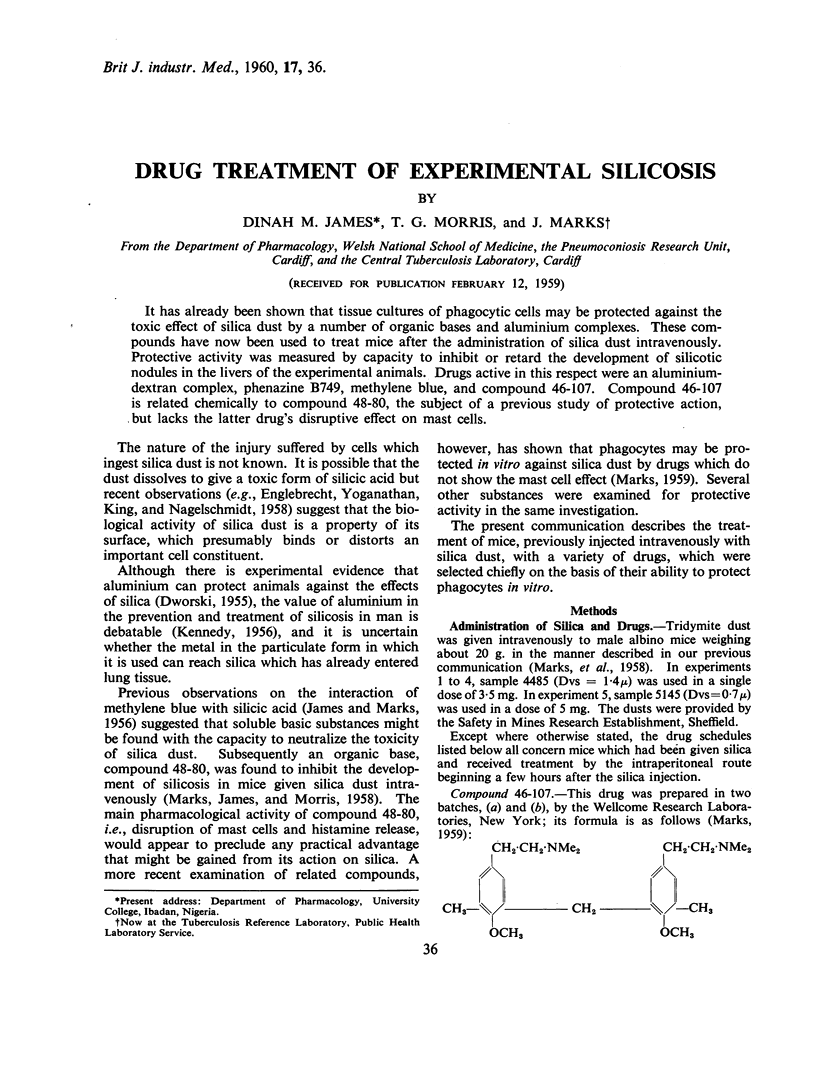
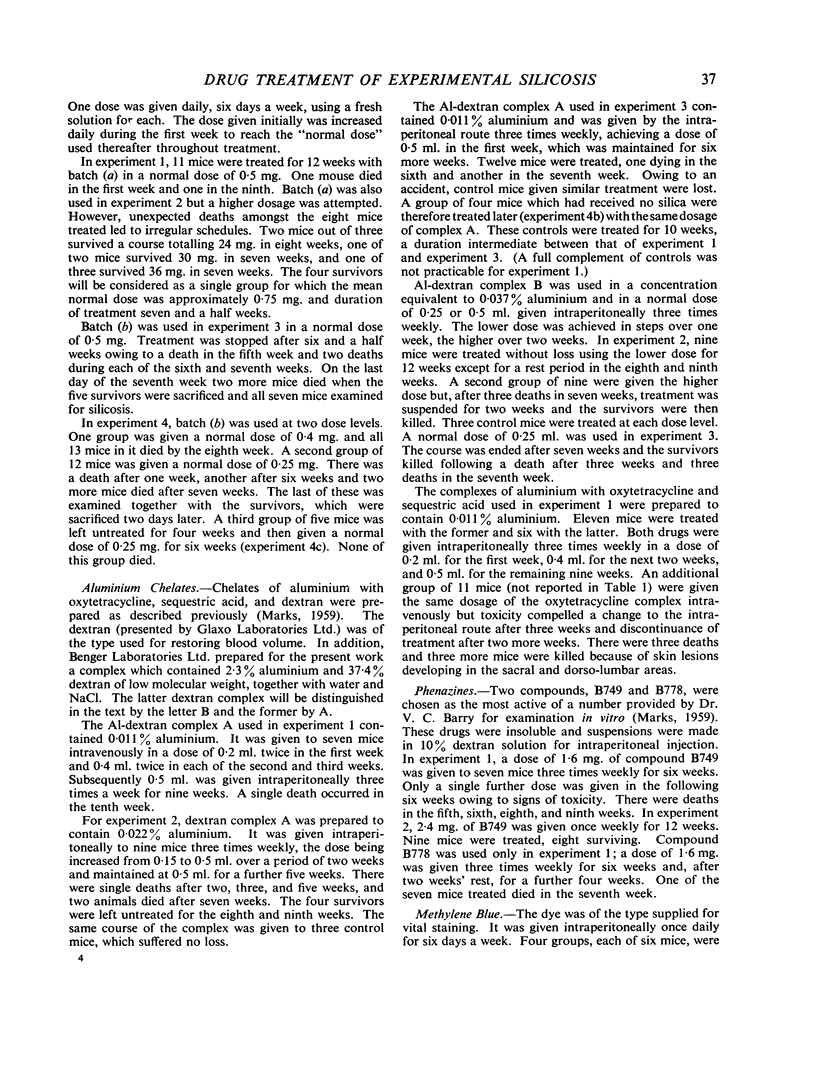
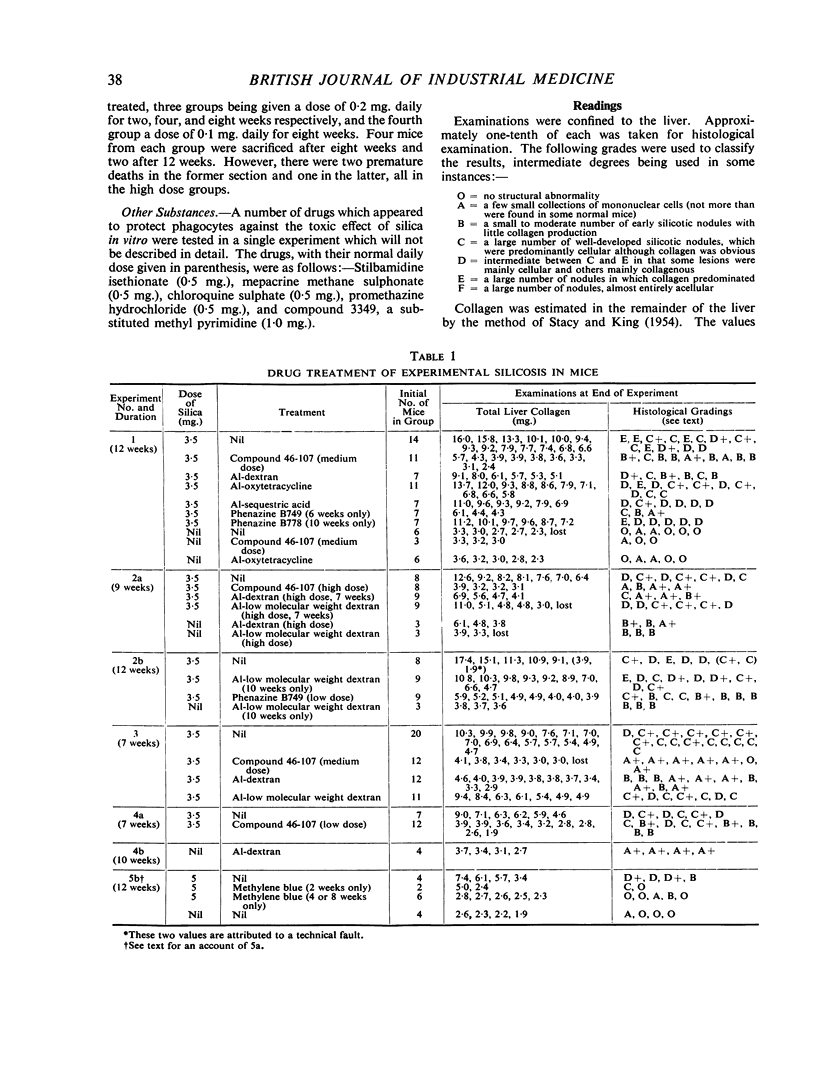
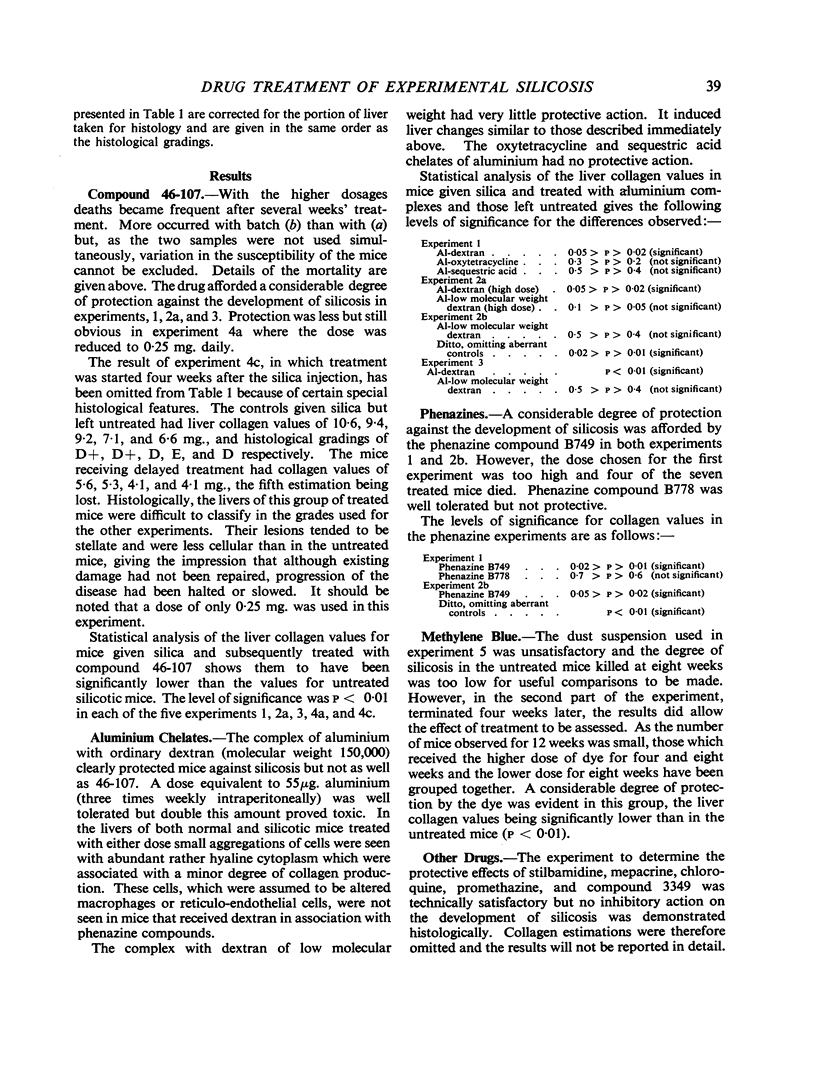
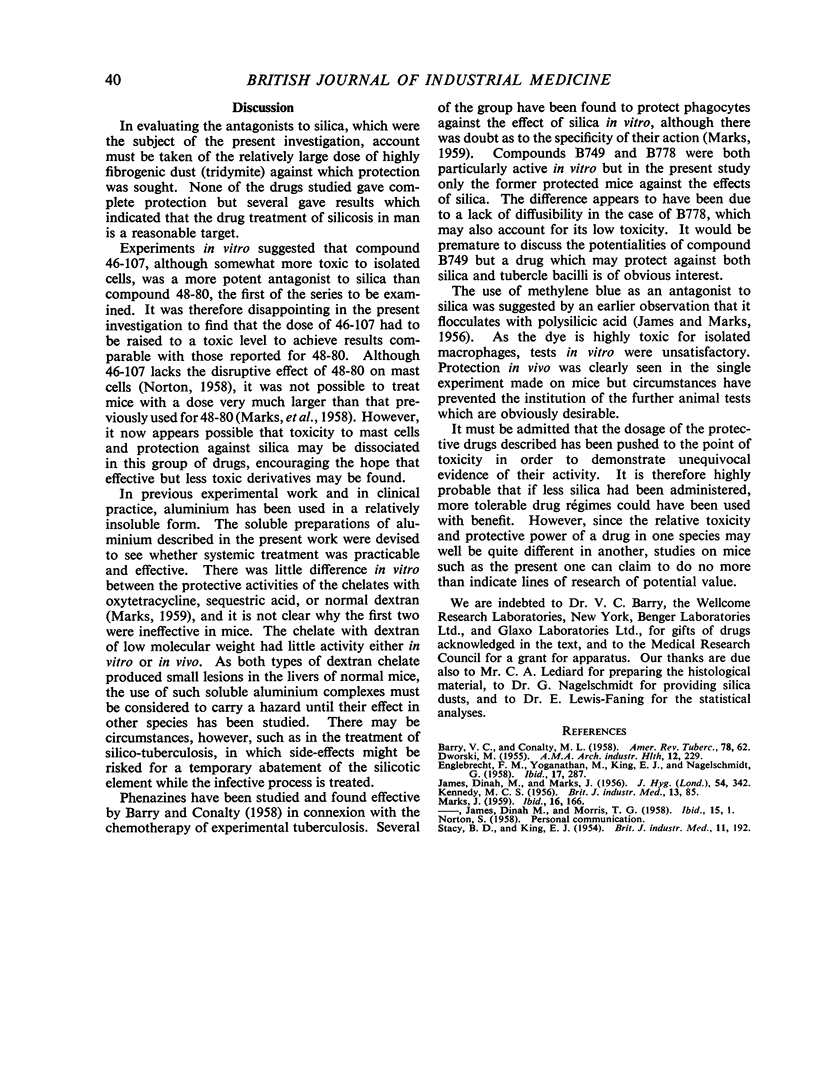
Selected References
These references are in PubMed. This may not be the complete list of references from this article.
- BARRY V. C., CONALTY M. L. Antituberculosis activity in the phenazine series. II. N3-substituted anilinoaposafranines (rimino-compounds) and some derivatives. Am Rev Tuberc. 1958 Jul;78(1):62–73. doi: 10.1164/artpd.1958.78.1.62. [DOI] [PubMed] [Google Scholar]
- DWORSKI M. Prophylaxis and treatment of experimental silicosis by means of aluminum; an experimental study. AMA Arch Ind Health. 1955 Sep;12(3):229–246. [PubMed] [Google Scholar]
- ENGLEBRECHT F. M., YOGANATHAN M., KING E. J., NAGELSCHMIDT G. Fibrosis and collagen in rats' lungs produced by etched and unetched free silica dusts. AMA Arch Ind Health. 1958 Apr;17(4):287–294. [PubMed] [Google Scholar]
- JAMES D. M., MARKS J. On the mechanism of silica toxicity. J Hyg (Lond) 1956 Sep;54(3):342–350. doi: 10.1017/s0022172400044600. [DOI] [PMC free article] [PubMed] [Google Scholar]
- STACY B. D., KING E. J. Silica and collagen in the lungs of silicotic rats treated with cortisone. Br J Ind Med. 1954 Jul;11(3):192–197. [PMC free article] [PubMed] [Google Scholar]


